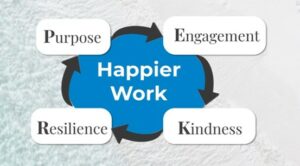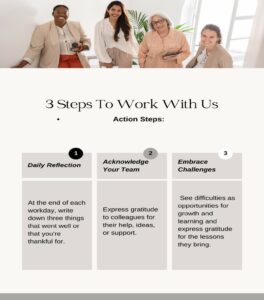Beyond Balance: Building a Life That Actually Works
Why work-life balance is the wrong goal; and what to pursue instead
Work-life balance is dead.
It died somewhere between your third “urgent” email at dinner and your weekend spent thinking about Monday. It died when you checked Slack at 11 PM, or when you missed another family dinner because “just one more thing” turned into three hours.
And here’s the uncomfortable truth: We killed it. We killed it by treating life like a seesaw; work on one side, everything else on the other, and believing that if we just got the weights perfect, we’d find equilibrium.
But here’s the good news: There’s something better. And it doesn’t require quitting your job, moving to a beach, or pretending you don’t care about your career.
It requires rethinking the entire concept of “balance.“
Why Balance is the Wrong Goal
When we talk about work-life balance, we imagine a perfect 50/50 split. Eight hours of work, eight hours of personal life, eight hours of sleep. Neat. Tidy. Completely unrealistic.
The problem? Life doesn’t work in neat compartments.
Your mind doesn’t shut off at 5 PM. Your responsibilities don’t pause when you leave the office. And the idea that you can—or should—keep work and life completely separate creates more stress than it solves.
Think about it: How many times have you felt guilty for checking email during family time? Or felt guilty for leaving work “early” to attend a personal event? That guilt? It’s the byproduct of the balance myth. The belief that work and life are opposing forces, and engaging with one means betraying the other.
What if we reframed the entire concept?
Instead of balance, what if we pursued integration?
Integration doesn’t mean working all the time or letting your job consume your identity. It means building a life where your work, relationships, health, and personal growth coexist and support each other; not compete.
It means asking: “How can my work fuel my life, and how can my life fuel my work?” instead of “How do I keep them separate?”
The Four Pillars of Sustainable Performance
If balance is the wrong goal, what’s the right one?
Answer: Sustainable performance. The ability to show up fully, at work and in life, without burning out.
Sustainable performance rests on four interconnected pillars. Neglect one, and the others crumble.
Pillar 1: Physical Wellbeing
Your body is the foundation. When you’re exhausted, undernourished, or constantly in pain, everything else suffers.
This isn’t about becoming a fitness influencer or running marathons. It’s about the basics:
- Sleep: 7-9 hours for most adults (yes, really)
- Movement: 20-30 minutes of activity that doesn’t feel like punishment
- Nutrition: Food that fuels you, not just fills you
The maritime reality: If you’re working 12-hour shifts on a ship, perfect sleep and fresh food aren’t always possible. But even micro-adjustments—10-minute walks, stretching between tasks, drinking water instead of your fifth coffee—compound over time.
The corporate reality: Sitting for 8+ hours, skipping lunch, relying on caffeine and sugar for energy. Sound familiar?
Action: Pick one physical habit to improve this month. Just one. (Sleep is the highest ROI.)
Pillar 2: Mental Wellbeing
Your mind needs rest as much as your body.
But mental rest doesn’t mean doing nothing. It means doing things that restore your cognitive energy—not drain it.
Scrolling social media? Draining.
Reading a book? Restoring.
Watching TV mindlessly? Draining.
Watching something you genuinely enjoy? Restoring.
The key: Intentionality. Ask yourself, “Is this activity giving me energy or taking it?“
For maritime professionals: Long contracts at sea = mental isolation. The mind craves stimulation, connection, novelty. Video calls with family, learning something new, engaging hobbies; these aren’t luxuries. They’re mental survival tools.
For corporate workers: Constant connectivity = mental exhaustion. Your brain was never designed to process 100+ notifications per day. Digital boundaries aren’t optional. They’re essential.
Action: Schedule one hour per week of “deep rest”, no work, no emails, no obligations. Protect it like you would a meeting with your CEO.
Pillar 3: Emotional Wellbeing
This is the one most people ignore.
Emotional wellbeing isn’t about being happy all the time. It’s about being able to process emotions instead of suppressing them.
When you suppress emotions, stress, frustration, sadness, anger; they don’t disappear. They accumulate. And eventually, they overflow in unhealthy ways: irritability, burnout, physical illness, broken relationships.
The maritime culture challenge: “Toughen up. Don’t show weakness. Just push through.” These beliefs don’t build resilience; they build emotional time bombs.
The corporate culture challenge: “Stay positive. Be a team player. Don’t bring your problems to work.” Translation: Pretend you’re fine when you’re not.
What actually helps:
- Naming your emotions: “I’m frustrated because…” (Acknowledgment reduces intensity.)
- Talking to someone you trust: Not to solve problems, just to be heard.
- Healthy outlets: Exercise, journaling, creative hobbies, therapy.
Action: Check in with yourself daily. “How am I feeling right now? What do I need?”
Pillar 4: Social Wellbeing
Humans are wired for connection. When that connection is missing, everything else falls apart.
At sea: You’re surrounded by people but may still feel completely alone. Hierarchy, language barriers, cultural differences, personality clashes; all make genuine connection difficult.
In corporate settings: You’re in meetings all day but rarely have meaningful conversations. Surface-level interactions don’t fulfill the human need for belonging.
What counts as social wellbeing:
- At least one person you can be honest with (not just “I’m fine”)
- Regular (even if brief) meaningful interactions
- Feeling seen, heard, and valued
Action: Reach out to one person this week; not to network, not to accomplish something, just to connect.
How Overwork Literally Changes Your Personality
Here’s something most people don’t realize: Chronic stress and overwork don’t just make you tired. They change who you are.
Research shows that prolonged exposure to stress hormones (cortisol, adrenaline) can alter brain structure and function. Specifically:
- The hippocampus shrinks (affecting memory and emotional regulation)
- The amygdala enlarges (making you more reactive to threats, more anxious)
- The prefrontal cortex weakens (impairing decision-making, impulse control, empathy)
In plain English: Overwork makes you more anxious, more irritable, less empathetic, and worse at making decisions.
You become a version of yourself you don’t recognize. The patient parent becomes short-tempered. The collaborative colleague becomes defensive. The thoughtful leader becomes reactive.
And here’s the scary part: You might not even notice it happening.
The solution isn’t to work less (though that helps). It’s to build recovery into your routine.
Recovery isn’t a reward for hard work. It’s a requirement for sustainable performance.
Rest as a Skill, Not a Luxury
Most high performers are terrible at rest.
Why? Because we’ve been taught that rest is:
- Lazy
- Unproductive
- Something you “earn” after you’ve worked hard enough
None of that is true!
Rest is a skill. And like any skill, it requires practice.
What rest is NOT:
- Collapsing on the couch after 12 hours of work
- Doom-scrolling on your phone
- Sleeping in because you’re too exhausted to get up
What rest IS:
- Active recovery: Activities that restore energy (walks, hobbies, time with loved ones)
- Mental downtime: Letting your brain wander without a goal (this is when creativity happens)
- Social connection: Genuine conversations that make you feel less alone
- Sleep: Non-negotiable. Your brain literally cleans itself during sleep (look up the glymphatic system).
How to get better at rest:
- Schedule it. If it’s not on your calendar, it won’t happen.
- Protect it. Treat rest time like you would a client meeting.
- Experiment. Not everyone rests the same way. Find what actually restores you.
For some people, rest is reading quietly. For others, it’s hiking or cooking or playing music. There’s no “right” way, only what works for you.
Building Boundaries That Actually Stick
Everyone talks about boundaries. Few people actually enforce them.
Why? Because boundaries feel uncomfortable. They feel selfish. They feel like you’re letting people down.
But here’s the reality: Boundaries don’t hurt relationships. They protect them.
Without boundaries:
- You resent the people you say yes to
- You underperform because you’re spread too thin
- You model unsustainable behavior (especially damaging if you’re a leader)
The most common boundary mistakes:
Mistake 1: Vague boundaries
“I’ll try to disconnect on weekends.”
→ Too vague. When will you actually check email? What counts as an emergency?
Better: “I check email once on Saturday morning from 8-9 AM. If it’s truly urgent, call me.”
Mistake 2: Boundaries with no follow-through
You say you won’t check email after 8 PM. Then you do. Every night.
→ Boundaries without consequences aren’t boundaries, they’re suggestions.
Better: Remove email from your phone. Use tools that block access. Make it physically harder to violate your own boundary.
Mistake 3: Apologizing for your boundaries
“Sorry, I can’t take that meeting. I have a personal commitment.”
→ You don’t owe anyone an apology for having a life outside work.
Better: “I’m unavailable then. Here’s when I’m free [Suggest a Timeframe].”
A script for saying no (without guilt):
“Thanks for thinking of me. I’m at capacity right now and can’t take this on without compromising the quality of my existing commitments. [Optional: Suggest alternative: Here’s someone who might be able to help / I could revisit this in [timeframe].]”
The Relationship Between Life Satisfaction and Professional Performance
Here’s the counterintuitive truth: The more you prioritize your life outside work, the better you perform at work.
Study after study confirms this. People who:
- Sleep 7-9 hours consistently
- Take regular breaks
- Maintain strong relationships
- Have hobbies and interests outside work
…outperform their burned-out peers.
Why?
Because performance isn’t about how many hours you work. It’s about the quality of the hours you work.
A well-rested, emotionally healthy, socially connected person working 40 focused hours will outperform an exhausted, isolated, emotionally depleted person working 70 distracted hours.
Every. Single. Time.
This applies to maritime life too.
Yes, you might be working 12-hour shifts. But the quality of those 12 hours depends on whether you’re sleeping well, managing stress, staying connected with family, and taking mental breaks.
The seafarer who protects their off-duty time, maintains physical health, and processes emotions effectively will be sharper, safer, and more resilient than the one who’s just grinding through.
What Actually Works (A Framework for Integration)
So if balance is the wrong goal, what’s the framework?
Step 1: Audit Your Energy
Not your time. Your energy.
You might have 24 hours in a day, but you don’t have unlimited energy. Track for one week:
- What activities drain you?
- What activities restore you?
- When are you most focused?
- When do you hit a wall?
Use our Energy Audit Toolkit (link below) to identify where your energy goes and how to reclaim it.
Step 2: Align Your Priorities
Write down your top 5 priorities (e.g., family, career, health, personal growth, friendships).
Now look at your calendar for the past month. Does your time reflect those priorities? Or are you spending 60 hours on work and 0 on the things you claim matter most?
Step 3: Build Micro-Boundaries
You don’t need to overhaul your entire life. Start with tiny boundaries:
- No phone in bed (charge it across the room)
- 10-minute morning routine before checking email
- One “no” per week to something that doesn’t align with your priorities
Step 4: Protect Recovery Time
Schedule at least:
- 1 hour per week for deep rest
- 1 full day per month for disconnection (if possible)
- 7-9 hours of sleep per night (non-negotiable)
Step 5: Reassess Quarterly
Every 3 months, ask:
- Am I living in alignment with my priorities?
- What’s working? What’s not?
- What needs to change?
The Bottom Line
Work-life balance is a myth. It sets you up to fail by treating work and life as opposing forces.
What works instead: Integration. Sustainable performance. Protecting the four pillars (physical, mental, emotional, social) so you can show up fully in all areas of your life.
This isn’t about doing less. It’s about being intentional with your energy. It’s about recognizing that rest isn’t a luxury, it’s a requirement. And it’s about building a life that fuels your work, instead of a work life that drains everything else.
Because here’s the truth: You’re not a machine. You’re a human. And humans need more than productivity to thrive.
So stop chasing balance. Start building a life that actually works.
Next Steps:
Download our free Energy Audit Toolkit (link) to identify where your energy goes and how to reclaim it.
Join 1,500+ professionals getting monthly insights on sustainable performance, mental health, and leadership. Subscribe to our newsletter
About the Author:
Strive High is a global soft skills consultancy specializing in behavioral training for maritime and corporate professionals. We’ve trained 5,000+ individuals in leadership, emotional intelligence, and mental health. Learn more at [www.strive-high.com].

















































